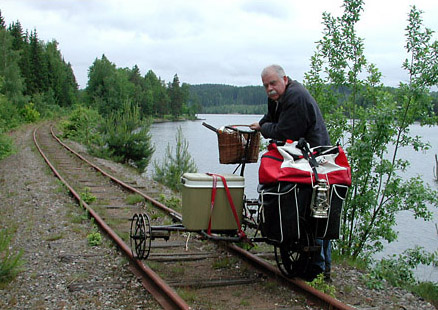
of Railbikers
by Morgan Gustuvasson
Two
Generations
Morgan and his
son Jonas
spend a weekend together
railbiking in Sweden.
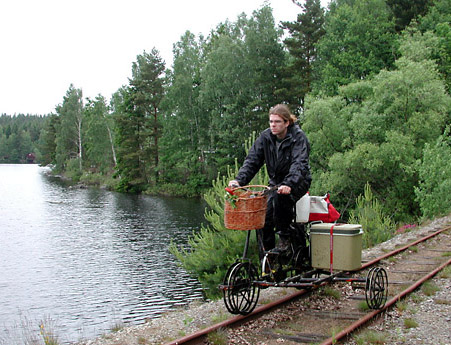
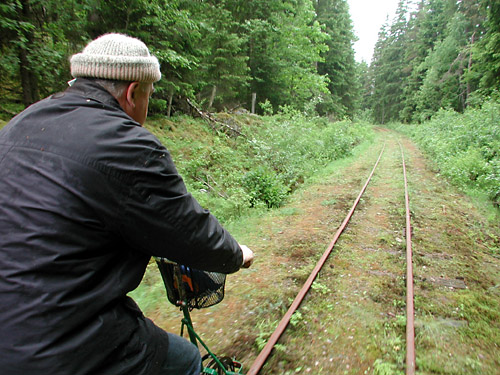
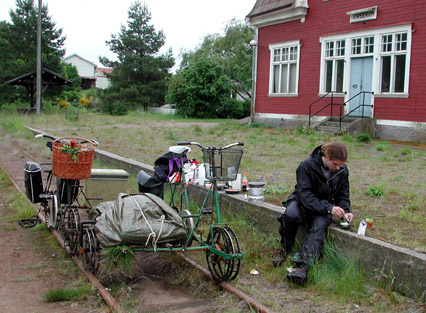
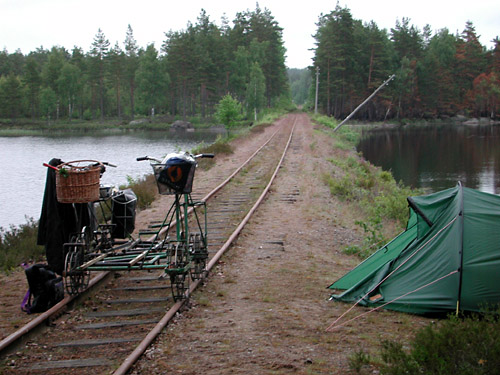
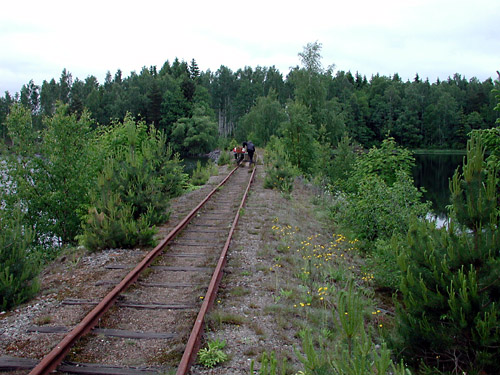
In the middle of June this year I spent two days railbiking with my son Jonas. Over the years he has movre or less willingly, but with increasing interest, been listening to my railbike stories (among them my trip to the States and ride through Carriso Gorge), so it seemed easy for him to accept my invitation.
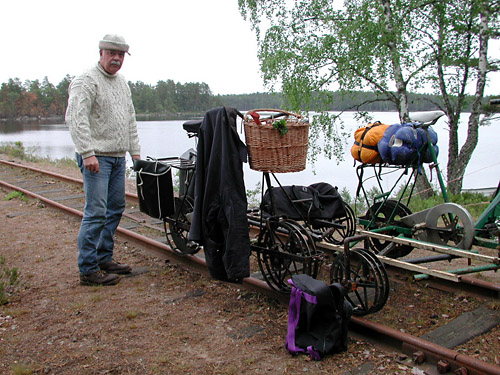
Morgan's son Jonas, the next generation railbiker.
One advantage of the "Iron Horse" as Morgan calls these bikes, is its large cargo carrying capacity. Here, at the end of the trip, Morgan shows a little fatigue, but a happy man never-the-less.
The two Iron Horses connected to form a tandem.

Would you believe it's 10:30 p.m. and almost as bright as day?
Jonas prepares for lunch in Virserum. Herring and potatoes.
Our camp at the end of the first day. If we are lucky we will have fresh fish for dinner.
This is the view as seen by the second tandem rider. Here we are deep in the woods. Unfortunately, it's the off-season for mushrooms.
I figured a weekend on the rails and camping would be a good way to come closer to my grown up son. We have a lot to talk about, but there are not so many opportunites nowadays. Although he is 31 years old I believe he still has a lot to learn from his father, and probably the opposite is also true. Besides this, my hope was to encourage a coming generation of railbikers.
Instead of the folding railbikes, which some of you have seen when Arne and I were in California, we chose to ride the old fashioned "iron horses" which I borrowed from Arne's railbike stable for this trip. Dick Smart has a similar machine. You can use these separated as normal bikes or you can connect them to form a tandem, like a little six-wheeled train. With a special homemade roofrack you can transport them on top of a car.
The railway we rode on has been available for railbiking on and off during the last 15 years and Arne and I have spent many days and nights enjoying it. It treats you to a fantastic ride with a very close feeling to Mother Nature, passing a lot of small lakes, varied deep woods, villages and fields. Maybe it was the last time we could ride
on this section (Vaxjo-Hultsfred). It is probably going to be scrapped in the near future.
From 1950 the importance of the railway decreased. The last train pulled by an engine ran in 1966. After that, passenger service was provided by rail buses until 1984, when all operaton ceased. Since then different societies have tried to keep the railway alive mainly as a museum line.
For the moment, however, it seems as if the southern part, Vaxjo-Hultsfred, will soon disappear. About one-third of it was scrapped last winter. The northern part, Hultsfred-Vastervik, will probably be declared
a historical monument and live on.
USE YOUR BROWSER'S BACK BUTTON TO GET HOME.
History of the Railroad
During the French-German war, which started in 1870, the price of iron and wood products increased rapidly and manufacturers with the capacity to deliver to the European continental market had a great opportunity to make a lot of money.
At the same time, unfortunately, the scarcity of timber as raw material for charcoal and wood products became an increasing problem in Sweden. The iron mills along the southeastern coast line had to look for wood deeper into the region of "Smaland". Thus, access to a fast transportation line became an important factor in a situation with increasing prices and competition.
A couple of the mills formed a company and built the first section of railroad from Vastervik to Hultsfred during 1877-1879. The second section from Hultsfred to Vaxjo, which originally was a separate railway company, was built in 1895. The two parts were finally connected in 1920 and formed a 187 kilometer line from Vastervik to Vaxjo. The gauge is 891 millimeters, three Swedish old feet (as compared to 911 millimeters for American 3 foot gauge). This is the longest remaining railway in Sweden built to this gauge.
 | ||||||